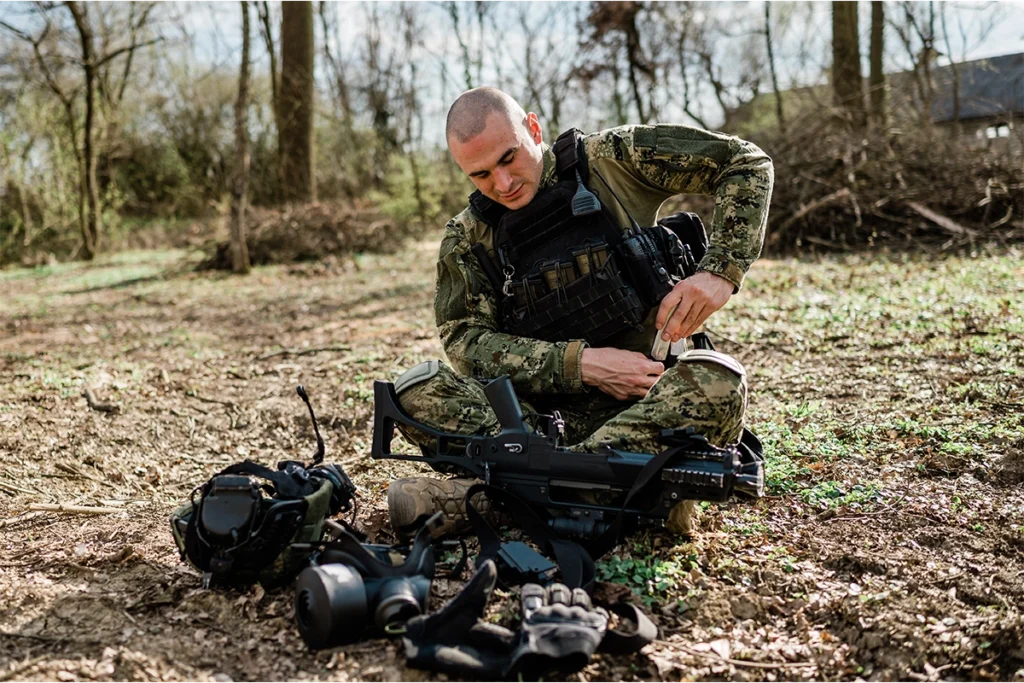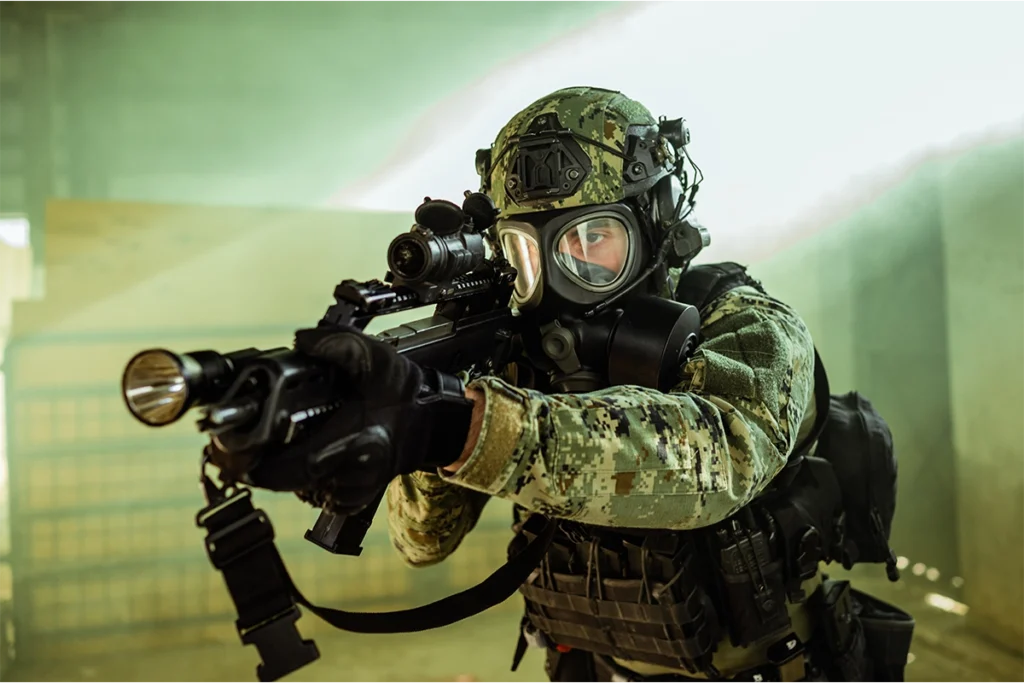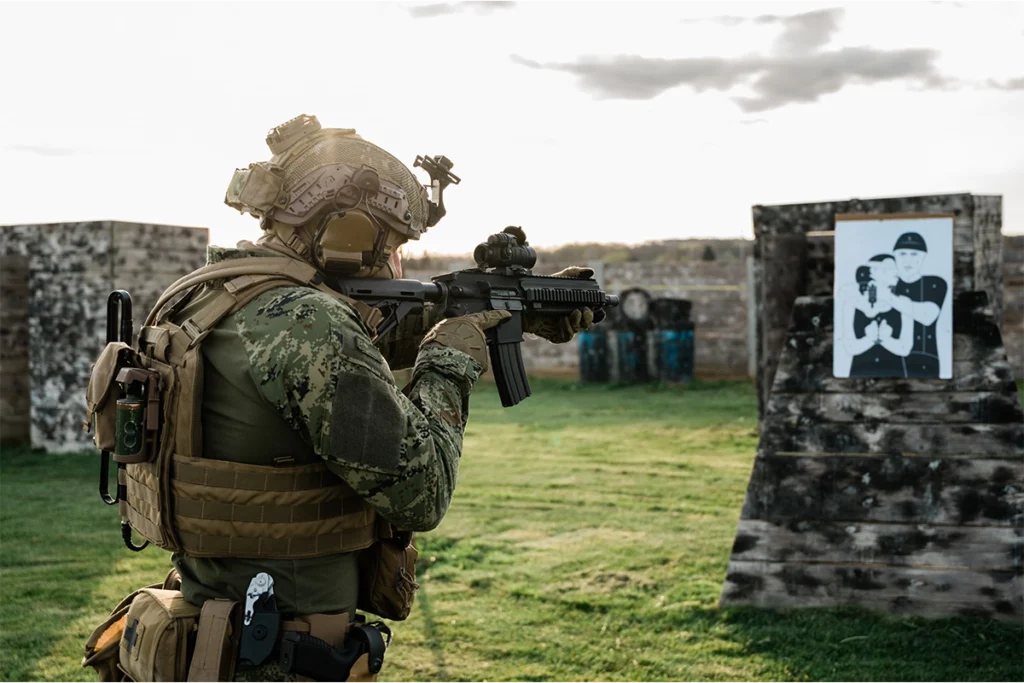In high-risk environments, safety is an absolute priority, and its foundation is properly selected ballistic clothing. Whether you are a member of uniformed services, a security professional, or a journalist in a conflict zone, having effective personal protection can be critical to your health and life. However, choosing the right components can be complicated. In this article, we will guide you through the key aspects you need to consider to consciously select gear that will provide you with peace of mind and confidence in any situation.
Types of ballistic clothing: What to choose?
When we talk about protective clothing, we most often think of a bulletproof vest. This is, of course, a correct association, but it’s worth knowing that the market offers various solutions tailored to specific threats and mission profiles. The basic distinction is between “covert” and “overt” vests. The former, like the VIP COVERT or LEONARDO COVERT models, are designed for discretion. Their ergonomic and lightweight design allows them to be hidden under clothing, which is crucial for personal security details or plainclothes officers.
Overt vests, or popular “plate carriers,” are a solution designed for external wear. Their greatest advantages are modularity and durability. Equipped with an integrated 360° MOLLE system, they allow for any configuration of additional pockets and pouches, from M4 magazine pouches to first aid kits and radio pouches. This makes them an ideal choice for soldiers and special forces operators for whom the ability to personalize equipment and have quick access to it is as important as the ballistic protection itself.

Understanding protection classes and levels
The key parameter of any piece of ballistic clothing is its protection level, most often defined by the standards of the U.S. National Institute of Justice (NIJ). The most popular standard for vests and helmets is Level IIIA. It provides protection against handgun rounds and fragments, which is sufficient for most police and civilian situations. All helmets in our offer, such as the MICH, GIDEON, or FAST models, meet this NIJ 0106.01 standard while also offering fragment protection compliant with STANG 2920.
When the threat involves rifle rounds, the use of hard ballistic inserts is necessary. Level III+ and Level IV plates, made of advanced composites or ceramics, can stop projectiles with much greater energy. Our offer includes ballistic plates in various sizes and classes, for example, the lightweight 1.4 kg SAPI CUT plate in Level III+ or the 2.4 kg Level IV plate that provides the highest level of protection. Remember that a higher protection class comes with increased weight, which can affect your mobility.
A vest is not everything: The modular system
Modern ballistic protection is more than a single piece of clothing—it’s an integrated system that you can expand and adapt to your needs. The foundation is, of course, a vest with the right inserts, but its functionality increases exponentially thanks to modularity. MOLLE/PALS webbing systems allow you to attach an almost infinite number of accessories in a way that is most ergonomic for you. This ensures that ammunition, medical supplies, and communication systems are always within reach.
This system can be further expanded with other elements. A tactical belt, such as the PT1 or Laser Cut model, allows you to transfer some of the load from the vest to your hips, which improves comfort and weight distribution. You can also attach additional pouches or a holster for a sidearm to the belt. Such a configuration creates a cohesive, highly personalized kit where every piece of equipment has its place and is easily accessible, which is invaluable in critical situations.

Comfort and fit vs. protective effectiveness
Even the best ballistic vest will not perform its function if it is ill-fitting. A vest that is too loose can shift, exposing vital organs, and can also interfere with aiming or free movement. On the other hand, one that is too tight will restrict movement, impede breathing, and cause rapid fatigue. That is why choosing the right size and ensuring precise adjustment using the shoulder and side straps is so important.
Manufacturers are paying increasing attention to ergonomics. Modern plate carriers feature internal panels with spacer mesh to improve air circulation and moisture wicking. In the case of premium backpacks, advanced back ventilation systems like the Combat Vent System® are even used. Remember that you will be wearing your protective gear for many hours, often in extreme conditions. Investing in comfort is not a luxury, but an element that directly translates into your effectiveness and ability to operate for extended periods.
Choose the right equipment for your needs
Choosing ballistic clothing is a decision that requires analysis and an understanding of your own needs and potential threats. From discreet covert vests and modular plate carriers to helmets and hard ballistic inserts—each element serves a specific function. We hope this guide has helped you systematize your knowledge and will make it easier to make the right decision. We encourage you to explore the full EU Shields offer, where you will find certified and field-tested solutions that you can fully customize to your requirements.


